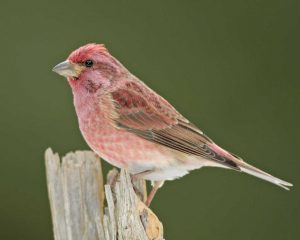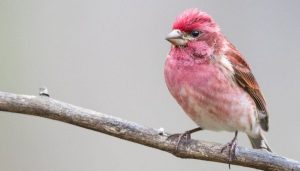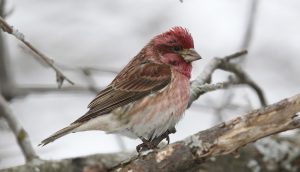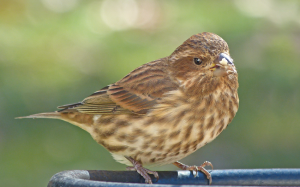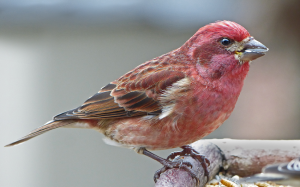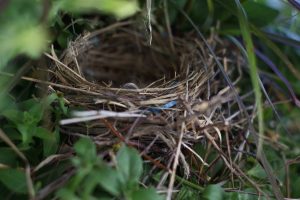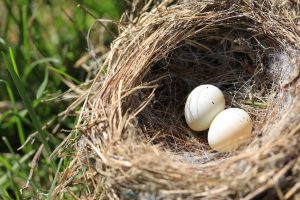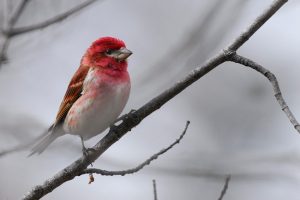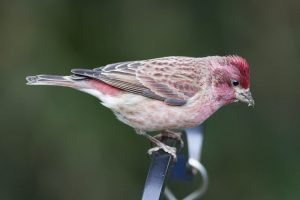Purple Finch
Purple finches are north American medium-sized birds and mostly confused with house finches. Earlier the species was grouped with rose finches but now there are clear differences in regards to their family.
Scientific Classification
| Kingdom | Animalia |
| Phylum | Chordata |
| Class | Aves |
| Order | Passeriformes |
| Family | Fringillidae |
| Subfamily | Carduelinae |
| Genus | Haemorhous |
| Scientific Name | Haemorhous purpureus |
Quick Information
| Description | Size: 6 inch (15.2-15.9 cm)
Wingspan: 10 inch (25.4 cm) Weight: 0.8-1.1 oz(25-34 g) Color: Males have a red head, rump, and breast with a streaked back while females exhibit pale brown upperparts and white underparts with a white mark on the eye and brown streaks all over the body |
| Distribution | Northeastern United States, Canada, U.S Pacific coast |
| Habitat | During summer evergreen and conifer forests, mixed forests and coniferous, wooded streams and during the winter season weedy fields and shrubby areas |
| Subspecies |
|
| Sounds & Calls | Something like ‘bdubs’ and warbles |
| Lifespan | 10-14 years |
| Diet | Seeds, nectar, buds, berries, and insects |
| Adaptations | Their beak is designed in a way that they can eat the seed without consuming the fruit, similarly, they can get to the nectar without spoiling the flower |
| Predators | Merlin, barn owl, blue jay, sharp-shinned hawk, domestic dogs and cats |
| IUCN Conservation Status | Least Concern |
- When aggressive, purple finches stretch their neck, pointing the beak and leaning towards their opponents.
- They often share the same tree with other finches despite fighting with them.
- Purple finches are good in foraging on the exterior of tree branches and seldom on the ground.
- They usually avoid bird feeders which are frequented by house finches and house sparrows.
- Mating and Reproduction
- The male purple finch impresses the female by fluffing his feather and hopping in front of her with a grass stem or twig in his mouth. He sings softly during the process. If the female is impressed then they two take a short flight up above the tree followed by mating. Clutch size is 2-7 light green-blue eggs with brown streaks which are incubated for 12-13 days. The breeding season is April-August. They are monogamous and their brood is twice a year.
Life-cycle
Hatchlings are fed by both parents for 13-16 days. The young ones leave the nest then but stay near it for 2-3 weeks. They attain sexual maturity in less than one year.
Interesting Facts
- Johann Friedrich Gmelin, the famous botanist and naturalist described the species for the first time in 1789, although the female purple finch was described earlier (1763) by the English physician Richard Brookes as ‘Chiantototl’.
- Female purple finches win fights against males most of the time.
References
Published on January 6th 2019 by Sahana Kanjilal under Coniferous Forest Animals.
Article was last reviewed on 17th July 2023.


